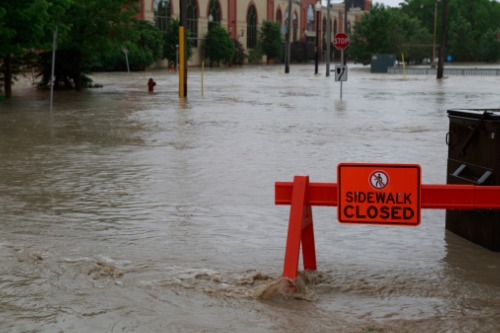

Backwater Solutions Canada recently announced it is pioneering a new process to help homeowners, insurance companies and brokers prevent sewer backup claims and reduce insurance payouts for flood-related incidents. The refined process includes a combination of education, training and services intended to not only cut insurance payouts, but also provide the insurance industry and local municipalities with valuable knowledge and information about sewer backup floods.
According to Swiss Re, flooding causes over $1 billion in direct damage to Canadian households, property and infrastructure every year. Of those flood damage claims, the Canadian Institute of Actuaries states that sewage backups outpace all other types of flooding, amounting to over 40% of total claims. This is something that not many Canadians are aware of, according to Neville Pokroy, COO of Backwater Solutions. He added that the “frustrating reality” is that sewer backups are largely preventable, especially if homeowners take responsibility for their own water management system and install a backwater valve.
“Almost 50% of money paid out by insurance companies for flooding claims is a result of sewage backup floods, and most of those are preventable,” said Pokroy. “At Backwater Solutions, our focus is very much on trying to help prevent those floods from happening, and trying to work with the insurance industry in order to educate homeowners and encourage them to take more action around what they do [to mitigate flood risk] around the home.”
Backwater Solutions is in the final stages of developing an early warning alarm system that attaches to its backwater valves. The system monitors what is happening in the paths below the home and communicates any changes that are likely to lead to a backwater flood. By providing an early warning notification, the firm can communicate with homeowners, insurers, brokers and municipalities before a flood event actually occurs.
“The purpose of the alarm is to know that the backwater valve is working and functioning properly, because if your backwater valve is working properly, it will prevent sewer backup from entering your home by shutting the door. It will also tell us whether that door is actually working or not,” said Pokroy. “If changes in the pipes happen and the flood risk goes away, then the doors should reopen, but if the flood is about to happen, the door will block the house from the paths in the sewers.
“Another critical thing that people don’t understand about flood is that a lot of flooding occurs because of ‘self-flooding’. If a backwater valve is shut off from the pipes and it gets jammed - in other words, that backwater valve is not working properly - and the homeowner doesn’t know there’s a problem, so they go and they use their dishwasher, they take a shower, or they flush the toilet, they are actually going to self-flood because that water cannot exit the home. So, not only [will our alarm system] facilitate the prevention of backwater flooding from occurring and entering the home, but we’re also going to be able to provide information to the homeowner to prevent them flooding themselves.”
Down the road, Pokroy hopes that the data Backwater Solutions collects from its early detection alarm system will help the firm to establish an underground flood mapping system, based on risk in Canadian sewers. This would help municipalities to shore up their local flood risk mitigation programs, and it would help insurers with their risk assessment procedures. He commented: “If we can give insurers a sense as to whether homes are actually being well taken care of, and homeowners are doing the right maintenance, flood mitigation, and have alarms in place – all of that will be extremely valuable data to the insurance industry.”
